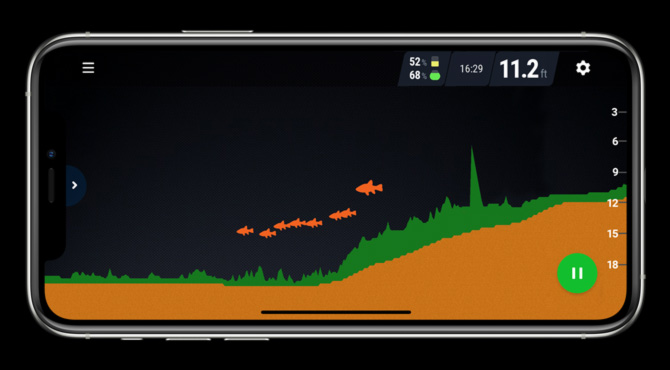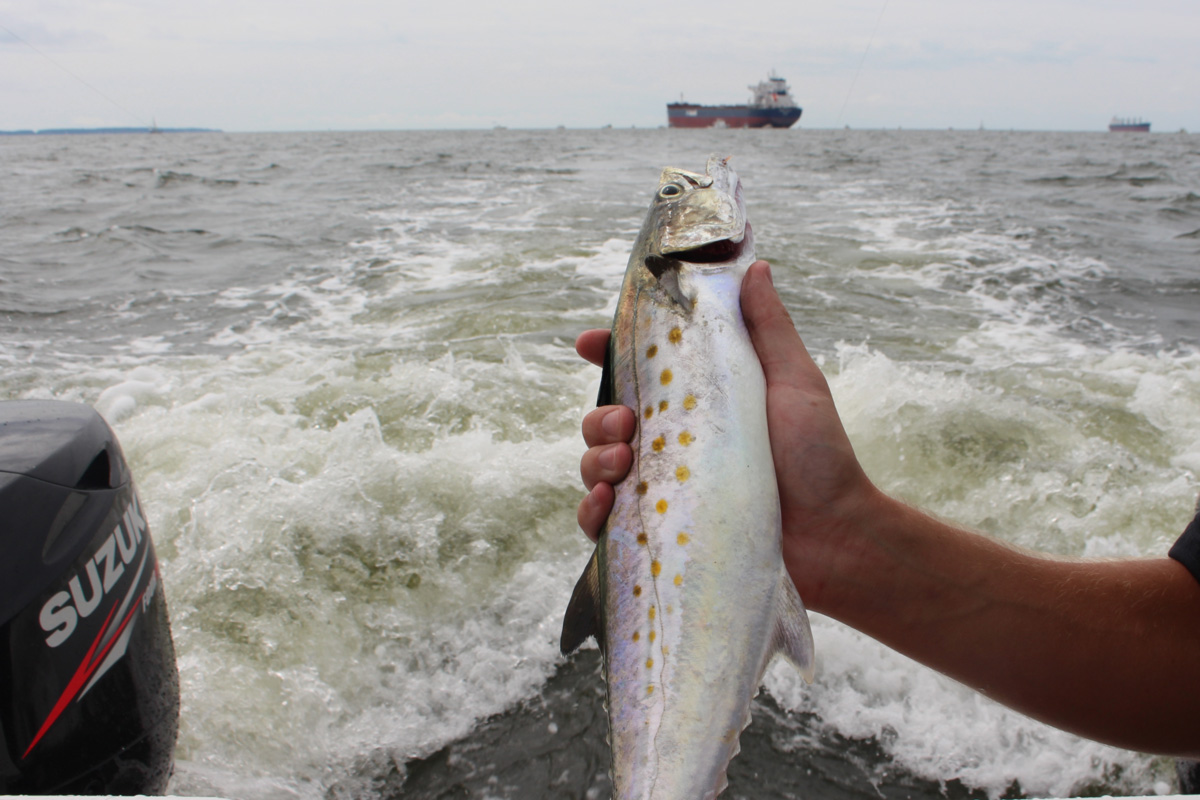Using Tech to Catch More Fish
We’ve all heard about 3-D and side-scanning fishfinders, apps for anglers, and GPS station-keeping “virtual” anchors. The application of such tech has become widespread among anglers, and no doubt helps them catch more fish. But there’s still some gee-wiz-type stuff out there that many anglers either haven’t heard about or haven’t considered for use as fish-catching tools. Do you want to use each and every bit of technology at your disposal to catch more fish? If so, check these out:
Castable Fishfinders
Whether you’re a landlocked angler, you fish from a small boat with no fishfinder or you want to see what’s around your boat when it’s at anchor, a castable sonar can get the job done. These consist of bobber-sized transducers weighing just a few ounces that you cast from a fishing rod. With Wi-Fi ranges of several hundred feet and the ability to transmit their imagery directly to your cell phone (where you see the fishfinder view via an app), simply cast the transducer out and retrieve it slowly back in.
First you’ll need to download the sonar’s app (which is generally free when you buy the unit) to your smart phone or other portable device. Then you’ll need to dedicate a relatively stout rod to the task of casting the transducer. They do tend to make a big splash which can be a disruption to the fish, so take note that if you plan to scan a small body of water you may want to take the time to plot it out and then wait a while or come back another time to do the actual fishing. But with a little planning you can do just that, because the apps for most of these systems will save your sonar scans and you can review them whenever you like.
Self-Charting
Just about everyone who fishes from a boat uses a chartplotter and often refers to the contour lines, depth soundings and other bathymetric information displayed on it. There’s just one problem: no matter how good your digital charts are, they aren’t perfect. In fact, the database for most bathymetrics all began with National Oceanic and Atmospheric Administration (NOAA) depth soundings, some of which are so old they date back to the days of lead-lines. Anyone with a good deal of experience can probably remember driving his or her boat right across one of those contour lines, and seeing nothing but smooth bottom – not to mention trying to find a charted wreck that’s not saved as a waypoint. Good luck with that.
The thing is, many of us could be vastly improving out bathymetric data as we cruise and as we fish. These days it’s possible to set your chartplotter and GPS to work in concert with one another, constantly recording the transducer depth data and GPS position data to update and re-draw your digital charts in real time.
These days there are multiple ways to make this happen automatically, in the background, with no additional effort on your part. If your MFD has WiFi, it’s almost certainly a piece of cake; in some cases you can set an app on your phone to pair up with the MFD and in other cases the unit can be set to initiate data-crunching when it comes within range of a hotspot. The latest units to hit the market can perform the task in real-time with no added input from the user.
Are there down sides? Of course — in this case it’s mostly a matter of figuring out how your system has to be set up to do this task. The steps vary quite a bit from manufacturer to manufacturer, but note that today’s systems aren’t nearly as clunky as they were just a few years ago. Still, some level of time-investment will be necessary.
Is it worth the hassle? Yes. Just imagine how much more accurate your bathymetry could be for the areas you fish on a regular basis, much less what you can learn as you explore new spots. You’ll be able to view contour lines down to 1’ increments, see tiny bumps and ditches that are too subtle to show up on mass-market digital charts and gain a much more accurate perspective of what the bottom really looks like. Do you think differences like this could give you a leg up on the competition? You bet. If your unit has self-made charting capability that you’re not using, you’re missing out.
The Advantage of Autopilot
Autopilots may have been created to make cruising easier, but get one and you’ll quickly realize that having an autopilot also helps you catch more fish. The first reason: tangles can be drastically reduced while trolling. With the autopilot you can set a heading, then change course in one-degree increments by pressing the “jog” button left or right. Ten quick button-presses takes just a second or two, and creates a 10-degree course-change.
In some cases with the latest units you won’t even need to press buttons, but can gesture with the controller to set a new course. Steering strictly on autopilot, you’ll be able to circle back on hotspots with a much smoother, more reliable rate of turn than can be accomplished by spinning the wheel by hand. Net result? Tangled lines become rare, so you spend less time straightening out messes and re-rigging, and more time with all the lines effectively deployed.
Reason number two: the captain can actually fish, instead of focusing entirely on steering the boat. With a full and experienced crew this isn’t an issue. But when you have an inexperienced group or a small crew, you can hit the “auto” button and then rig lines or reel in fish. Yes, of course you do need to be careful to continually pay attention to what’s ahead of the boat, and a potential pitfall is the temptation to pay too little attention to maintaining a good lookout. But with the autopilot you’ll be a more effective troller and even trolling alone becomes an option.
This is just a peek at a small selection of the tech out there that can help you catch more fish. But as you consider which goodies and gizmos are worth bothering with and which cost more than they’re worth, make sure to consider these three options – because all of them can help you catch more fish.


